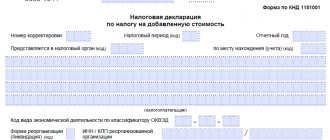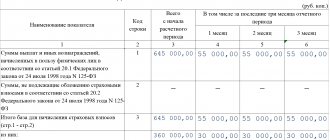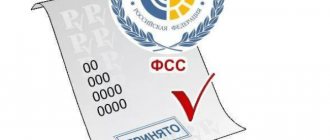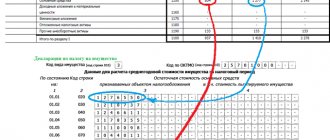Financial statements
Almost every enterprise maintains accounting records of business activities: cash books are filled out, receipts and debit orders are issued, pay slips are prepared, and so on. The listed documentation refers to primary accounting tools, and financial statements are prepared on their basis, according to the data they contain.
What are financial statements (BA)? These are documents containing general information about the movement of the company’s finances, as well as about its economic, property and business condition at the current moment.
At each enterprise, the BO is formed taking into account the specifics of production or activity. For example, individual entrepreneurs do not keep accounting records at all and are exempt from this type of reporting. In general cases, when financial statements are mentioned, it usually means: the enterprise’s balance sheet and financial performance statement.
Also, the BO may include explanatory notes to these documents, other reports necessary for complete and reliable accounting, for example, a report on the flow of funds and the like.
For companies that are subject to mandatory auditing, the financial statements also include the auditors' opinion, without which the statements are considered invalid (since the head of the enterprise has the right to sign the balance sheet and financial statements only after the audit opinion has been issued).
Back to contents
Balance sheet
A balance sheet is a document that reflects data on all assets and liabilities of an enterprise.
The assets of an enterprise are all products, raw materials, equipment, tools, movable and immovable property that is in its ownership.
Liabilities are the capital and reserves of the organization, as well as liabilities, that is, those funds that were transferred or lent to the company from suppliers, creditor organizations, and so on. It is assumed that these funds entered the balance sheet of the enterprise for the purchase of elements necessary for production or operation and must be returned within the agreed time frame.
The assets and liabilities in the balance sheet must be equal. Large enterprises with extensive and varied activities can attach other reports to the balance sheet that fully disclose its positions; for small enterprises, only a balance sheet and a statement of financial results may be sufficient for reporting, since all comprehensive information about economic activities will be reflected there.
An example of filling out the BO is drawn up according to form No. 1. The form consists of two pages: on one, assets are indicated in a table, on the other, liabilities (including liabilities) are indicated in a table.
The tables must contain data on three parameters: the current reporting period, at the end of the previous reporting period and at the end of the reporting period preceding the previous one. In empty columns you must put dashes, round all amounts to a whole number (taking into account the selected unit of measurement: thousands or millions).
The balance sheet form is filled out in the following order:
- the header of the document is filled out: the date of drawing up the balance sheet, the name and details of the enterprise are indicated;
- the asset table is filled in: non-current assets are indicated (intangible, research and development results, exploration assets, profitable investments in tangible assets, fixed assets, profitable investments in tangible assets, financial investments, deferred tax assets), current assets (all inventories, VAT on acquired assets, accounts receivable, financial investments for a period of at least a year, cash and cash equivalents);
- a table of liabilities is filled out in three sections: capital and reserves, long-term liabilities and short-term liabilities;
- The data on assets and liabilities is reconciled: they must match.
If these amounts do not match, the balance will need to be reconciled and rechecked until the amounts agree.
Back to contents
Income statement
The financial results report is maintained in accordance with Form No. 2, approved by the Ministry of Finance of the Russian Federation. The form contains lines and columns that must be filled out in accordance with established requirements.
The procedure for filling out this BO in 2021 is as follows:
- the reporting period is indicated;
- fill out the header - information about the enterprise;
- the unit of measurement is indicated: thousands of rubles or millions;
- the table contains indicators of the enterprise’s income and expenses for all types of activities, taking into account data for the current reporting period and the previous one;
- the table also takes into account tax assets and liabilities; if necessary, a table for deciphering individual profits and losses is filled out;
- the date of preparation of the report is indicated;
- The report is signed by the chief accountant of the enterprise and the head of the enterprise.
Back to contents
Formula for calculating the graph for the general balance sheet
The document template is approved by Appendix-1, MFR order No. 66-, the form can be downloaded via the link.
Section "Asset"
Logical connections for the “Asset” section, subsection 1 “Non-current”, the balance sheet is filled out line by line according to the following connections:
- Intangible assets - the difference between the lines “Debit (D)-04” and “Credit (C)-05” (not vice versa);
- Research and development, the result is equal to the line “D-04”;
- Intangible assets, search - equal to the line “D-08 subaccounts NP-expenses”, the indicator only for companies using natural resources, reflects expenses on natural raw materials;
- The same, material, search - equal to the line “D-08 subaccount MP-expenses”, the indicator is only for companies using natural resources, displays expenses on natural raw materials, otherwise the instructions for filling out the balance sheet apply to everyone;
- Fixed assets – equal to the result according to the formula “Debit-01” minus “K-02” plus “D-08 sub-accounts for non-operational assets”;
- Investments in assets, income-bearing – equal to the difference between “D-03” and “K-02 subaccounts for depreciation of assets associated with income-generating investments”;
- Financial investments - the sum of columns “D-58”, “D-55 of the deposit sub-account”, “D-73 of the sub-account of loans granted”, “K-59 of the reserve sub-account, long-term financial obligations”;
- Tax asset, deferred – equal to “D-09”;
- Other non-current assets – all remaining non-current assets in monetary terms;
- Section total – the sum of adding all the results for the described lines.
The same section, subsection 2 “Current assets”, filling out the balance sheet for accounts is carried out according to the following formulas:
- Inventories are “D-41” - “K-42” + “D-15” + “D-16” - “K-14” + “D-97” + folded balances and debits for accounts 10-11, 20-21, 23, 29, 43-45;
- VAT on funds received – equal to column “D-19”;
- Accounts receivable – the sum of the “Debits” lines 60, 62, 68-71, 73 (without loans with interest), 75, 76, minus the indicator of the “K-63” line;
- Financial investment without monetary equivalents - the difference between the amount of “D-58”, “D-55 of the deposit sub-account”, “D-73 of the sub-account for loan payments (from those provided)” and line “K-59”;
- Cash and cash equivalents – the difference between the amount of “Debits” 50-52, 55, 57 and the line “Debit-55 of the deposit subaccount”;
- Other assets, current - all remaining current assets in monetary terms;
- Section total – the sum of adding all the results for the described lines;
- The balance sheet total is the addition of the “Total” lines for both subsections of the “Asset” (1 and 2).
Section "Passive"
There are 3 subsections in the “Passive” section. For the subsection “Capital, reserves”, the breakdown of the balance sheet by line looks like this:
- Authorized capital – line indicator “Credit-80”;
- Shares, own, purchased from holders - line indicator “Debit-81”;
- Non-current assets, revaluation – equal to “K-83 subaccounts for revaluation of fixed assets and intangible assets (DSO and DAN)”;
- Additional capital (revaluation is not taken into account) - the same line from the previous formula, but without taking into account the amounts of DSO and DAN;
- Reserve capital – line indicator “K-82”;
- Retained profit – indicator “K-84”;
- The final line is the result of adding all the indicators obtained above.
The subsection “Long-term liabilities” has a distribution of accounts in the balance sheet along the following lines:
- Borrowed funds – equal to “K-67”, interest that must be repaid in a year or less will be included;
- Deferred tax liabilities – equal to “K-77”;
- Estimated obligations – equal to “K-96”, obligations are assumed for which more than a year is allocated;
- Liabilities etc. – other liabilities;
- Section total – the sum of all obtained values.
The subsection “Short-term liabilities” is filled in according to the following example:
- Borrowed funds – the amount of “K-66” and “K-67” (more than a year);
- Credit debt – amount of “Loans” 60, 62, 68-71, 73, 75 (short-term), 76;
- Future profit (BP income) – amount of “Credits” 86, 98;
- Estimated obligations – equal to “K-96”, obligations are assumed for which more than a year is allocated;
- Liabilities etc. – other liabilities;
- Section total – the sum of all obtained values.
The overall balance sheet component is the sum of the “Total” indicators of all 3 subsections of the “Liabilities” section.
Frequency of compilation
An enterprise's financial statements must be prepared at least once a year, since information for this period is submitted to the tax service. Intra-annual or interim reporting periods are also provided: month, quarter, six months, nine months.
Until 2012, all enterprises, along with annual financial statements, were required to submit interim reports to the tax service, but the latest edition of the Law “On Accounting” abolished this requirement. However, the preparation of interim reports within the enterprise is still provided for.
According to federal laws, some enterprises, for example those engaged in insurance activities, must still provide interim accounting reports.
Back to contents
What should come from the accounting department to the Federal Tax Service for the year?
The list of reports that organizations are required to provide in 2020 is as follows:
- Main balance sheet for accounting.
- Final financial report.
- Results of target cash flow.
- Data on the intended use of received funds.
- Explanatory note to the balance sheet and financial report.
Report forms 1 to 4 are contained in the order of the Ministry of Finance (Ministry of Finance) No. 66-n, 2010. The documents must fully comply with the order.
The explanatory note is written on behalf of the person submitting the summary and has no clear restrictions on the content. This could be a numerical table, or it could be text that complements and reveals various data.
A small enterprise in Russia has the right to provide a shortened version of mandatory reporting for the year, without submitting reports on the turnover and use of funds. If this is important, you can attach explanations to the calculations, information, and graphs. When there is no such need, the explanatory note may also not be filled out. In other cases, companies are required to prepare all 5 items from the above list.
According to Law No. 402-FZ “On Accounting”, for 2011-2014, Article 18, Part 2, and the Tax Code of Russia, Article 23, Part 1, Clause 5, all reporting reports must be transferred to tax and statistical authorities no later than March 31 of the new year. Thus, accounting reports for 2021 will be kindly accepted until March 31, 2020, after which fines will begin to be distributed to the late enterprise.
Often, the organization’s charter requires reporting to be prepared more often than once a year: from once a month to once every 3 months. Such reports are intended for the information of the founders only and are provided only to them. There is no need to send them to government agencies.
Accounting reporting and legislation
The maintenance and preparation of financial statements is regulated at the state level:
- government regulations and presidential decrees;
- orders and regulations of the Ministry of Finance of the Russian Federation; methodological recommendations, letters and manuals of the Ministry of Finance of the Russian Federation and other authorized bodies;
- norms of the Labor, Tax and Civil Codes of the Russian Federation;
- federal laws regulating the activities of individual industries and enterprises.
The main document regulating the maintenance of accounting documents is the Federal Law “On Accounting” No. 402-FZ dated December 6, 2011. At the level within the enterprise, accounting is regulated by local acts, which must reflect the established accounting policy. The accounting policy provides for the procedure and forms of accounting statements, as well as the reporting periods and dates on which it should be formed and provided to management. Accounting policies must be formed in accordance with the requirements of current legislation and cannot conflict with them.
Back to contents
Instructions for filling
The most frequently requested report forms are:
- balance sheet of the enterprise;
- profit and loss statement of the enterprise.
A balance sheet is a document containing information about the total value of the assets owned by a particular enterprise, as well as its liabilities. According to the data that the document contains, it is possible to determine what property the organization owns and how much debt it has.
The balance sheet is usually prepared at the end of the year, or at the end of the quarter. The balance sheet consists of two parts, called assets and liabilities. Both parts must be equal to each other. An accounting analysis of an enterprise can provide information about the real state of affairs in a particular organization, as well as the prospects for further cooperation with it.
The balance sheet asset consists of two parts:
- non-current assets (long-term investments, equipment, material assets, etc.);
- current assets (cash, raw materials, accounts receivable, etc.).
An asset shows what property and finances a given enterprise has, a liability contains data on the formation of sources of property and finance. The passive consists of three parts:
- capital and reserves (own funds of the organization’s owners);
- long-term liabilities (credits, borrowings);
- short-term liabilities (wages and suppliers).
General mandatory requirements
In addition to accurately and correctly filling out all the necessary columns in the established forms of accounting documents, you must also take into account that the law also imposes other general requirements for this type of documentation. Namely:
- financial statements must reflect the entirety of the enterprise’s economic activities;
- accounting information must be timely - every fact of economic activity must be immediately reflected in documents;
- The BO must be careful - the creation of hidden reserves and premature recognition of income are not allowed;
- the information in the accounting statements should not be contradictory - the information in the accounting documents at all levels must be the same;
- It is necessary to adhere to the principle of priority of content over form. This means that the activities of an enterprise should be reflected primarily in terms of economic rather than legal content;
- BO must be rational - this means that the number and content of documents must be selected taking into account the specifics of the enterprise and its activities;
- Accounting statements must be consistent. Once adopted, the accounting policy must be maintained from year to year without sudden changes;
- continuity of financial and economic activities of the enterprise;
- financial statements must contain only reliable information; distortion of financial statements, intentional or unintentional, is not permitted. If an unintentional (mechanical or accidental) error is discovered, it is necessary to make appropriate corrections and record them with the date the error was discovered and the signature of the person who corrected it. Intentional distortion threatens the enterprise in general and the chief accountant (as well as the manager, since he is obliged to check the statements) with penalties.
Back to contents
Requirements for filling out the accounting reporting form
When filling out the reporting form, the following requirements should be taken into account:
- One of the main criteria for assessing the objectivity of a document is its reliability and completeness of the information provided. The document must provide detailed information that should give an accurate picture of the property and financial position of the organization;
- the accounting document must contain neutral information that excludes unilateral satisfaction of the interests of one of the interested parties;
- the information presented in the accounting document must be subject to the principle of consistency;
- reporting documentation must contain information that can be compared with similar data for the previous period of time;
- the information presented in the report must be consistent. This means that the documentation must contain information about the economic activities of not only the organization itself, but also its branches and representative offices;
- When drawing up a document, the reporting period must be observed, which always coincides with the calendar period. The reporting date will be the last day of the reporting period (December 31 and other last days of each month);
- the information in the document must be presented to the point, i.e. A clear, concise form with logical paragraphs is encouraged;
- timeliness means that any action taken is immediately recorded in the relevant documents;
- consistency is understood as the condition that data from the primary registers must correspond to the report amounts obtained as a result;
- the document must be prepared according to the established rules. The information must be provided in Russian, in the currency of the Russian Federation, and the document must bear the signature of the manager and the accountant who compiled the report. The title of the report, reporting period, name of the organization and its data are mandatory components of any reporting document.
Filling out the balance sheet for 2018 – Lawyer
II 1240 “Financial investments (except for cash equivalents)” Dt 58 + Dt 55 subaccount “Deposit accounts” + Dt 73 subaccount “Settlements on loans granted” (analytical accounts for short-term financial investments) – Kt 59 (analytical account for accounting for reserves for short-term financial investments) The article, in particular, shows loans provided by the organization for a period of less than 12 months II 1250 “Cash and cash equivalents” Dt 50 + Dt 51 + + Dt 52 + Dt 55 + Dt 57 – Dt 55 subaccount “Deposit accounts” "(analytical accounts for accounting for financial investments) Sum up in the line the cost of cash equivalents (the balance of the corresponding subaccounts of account 58) and the balances of the accounts in which funds are recorded (50 “Cash”, 51 “Settlement accounts”, 52 “Currency accounts”, 55 “Special bank accounts” and 57 “Transfers in transit”).
Important
- 1 How to fill out a balance sheet 1.1 Example of filling out a balance sheet for accounts
- 3.1 Asset
How to fill out a balance sheet The easiest way to fill out a balance sheet is to fill it out using the organization’s balance sheet.
The formation of SALT is based on the use of the double entry method, which allows you to monitor the correctness of business accounting. The SALT debit turnover is always equal to the credit turnover.
An example of a balance sheet in the popular 1C program: Before the balance sheet is formed, all operations to close the reporting period are performed.
Simplified balance sheet for small businesses in 2021
In this case, the amount should be reflected taking into account the interest due at the end of the reporting period V 1520 “Accounts payable” Kt 60 + Kt 62 + Kt 76 + Kt 68 + + Kt 69 + Kt 70 + Kt 71 + Kt 73 + Kt 75. In this case, take into account only short-term debt. The total amount of accounts payable is recorded in line 1520.
Attention
Show debts to employees for wages, to the budget for taxes, etc. V 1530 “Deferred Income” Kt 98 + Kt 86 in terms of targeted budget financing, grants, technical assistance, etc.
The line is filled in when accounting standards provide for the recognition of a given accounting object. For example, if an organization receives budget funds or amounts of targeted funding.
Such funds are taken into account as part of deferred income in accounts 98 “Deferred income” and 86 “Targeted financing” (clause.
Procedure for drawing up a balance sheet (example)
So, you will learn about form 1:
- Who fills it out;
- For what period?
- In what form?
- What applications?
- Whether to approve the form;
- Where to submit;
- On paper or electronically;
- To what time to report;
- Should I publish it?
- Where to get data from;
- How to calculate indicators for the 2021 balance sheet (formulas).
Who fills out Form 1 is included in the reporting of all commercial and non-profit companies. Even if the activity was not actually carried out. That is, the reporting turns out to be zero.
Another point is that small companies have the opportunity to choose which balance sheet form for 2021 to use - the general form or the simplified one.
All NPOs also have the right to use the simplified version. Details are below.
Merchants do not prepare or submit accounting reports. For what period is Form 1 filled out in 2021 for the past 2021?
Filling out a balance sheet: example with explanation
Record which option you are using in your accounting policy for accounting purposes.
Form for everyone (balance sheet in a general form) download to fill out Form for beneficiaries (balance sheet in a simplified form) download to fill out What applications Form 1 is not alone. That is, not one is being given up. At a minimum, together with Form 2 for commercial companies.
And with a report on the intended use of funds (form 6) - from the NPO. There are also applications for the said duo in 2021. This is (we give the form number in brackets):
- statement of changes in capital (form 3);
- cash flow statement (form 4);
- report on the intended use of money (form 6) - for non-profit organizations;
- explanatory note.
With a simplified version of reporting, the specified additional reports and explanations are allowed not to be drawn up if there is no important information to be disclosed.
And there is no need to decipher the given indicators.
The balance sheet in 2021, as in previous years, is expected from companies by two services: tax and statistical.
What form to prepare, what to include in it and what deadlines to meet – read about everything in our article in the form of answers to the most pressing questions.
At the same time, we have described the indicators to be filled out in as much detail as possible in a convenient table.
Also download our balance sheet forms in excel/word format with sample completion.
Source: https://advokattat.ru/zapolnenie-balans-za-2018-god/








